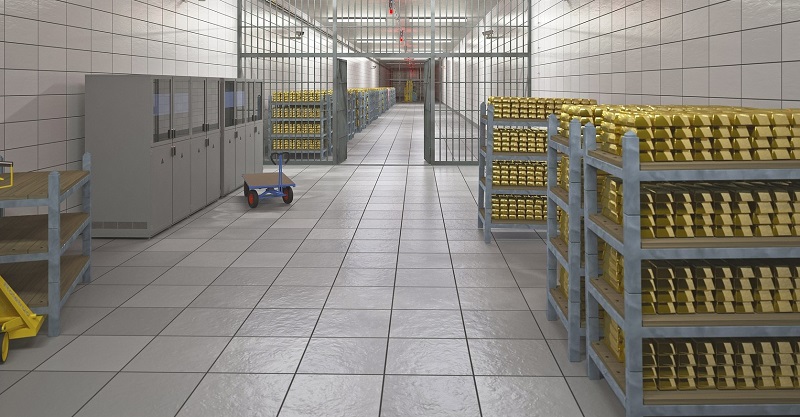For decades, Fort Knox has stood as a symbol of impenetrable security, housing a substantial portion of the United States’ gold reserves. However, the story of gold vaults goes beyond the confines of Fort Knox, encompassing a fascinating evolution driven by advancements in technology, changing security needs, and a globalized financial landscape. In this blog post, we explore the history of gold vaults, from the iconic Fort Knox to the cutting-edge facilities of the modern era.
Fort Knox: An Icon of Security
Fort Knox, situated in Kentucky, USA, has etched its name in history as the quintessential bastion of gold storage since assuming the responsibility of safeguarding the nation’s gold reserves in 1937. Managed by the United States Mint, this facility has become synonymous with impenetrable security, boasting a formidable defense against any potential threat.
The architectural prowess of Fort Knox is evident in its thick granite walls and blast-proof doors, designed to withstand the most formidable challenges. The site is further fortified by an impressive contingent of armed guards, creating a physical and metaphorical fortress around the precious metal within.
One of the enduring enigmas surrounding Fort Knox lies in the deliberate veil of secrecy shrouding the exact quantity of gold housed within its confines. This undisclosed aspect has only deepened the mystique surrounding the facility, fueling speculation and contributing to its iconic status.
As a symbol of economic strength and stability, Fort Knox stands not just as a physical repository of wealth but as a testament to the meticulous measures undertaken to ensure the safeguarding of a nation’s most valuable assets. Its aura of mystery and its vital role in the nation’s financial history continue to make Fort Knox an enduring emblem of security and resilience in the realm of gold storage.
The Rise of Private Gold Vaults
While government-operated vaults like Fort Knox play a crucial role in safeguarding national reserves, private individuals and institutions have increasingly turned to private gold vaults for secure storage. These facilities offer a range of services, including allocated and unallocated storage, insurance coverage, and convenient accessibility. The appeal of private vaults lies in their ability to cater to the diverse needs of gold owners, whether they are institutional investors, high-net-worth individuals, or everyday savers.
Technological Advancements in Security
As technology has advanced, so too have the security measures implemented in gold vaults. Biometric access controls, state-of-the-art surveillance systems, and advanced encryption technologies are now integral components of modern vault security. These innovations not only enhance protection against physical threats but also safeguard against cyber risks in an era where digital assets, including gold-backed cryptocurrencies, are gaining prominence.
Globalization and Gold Storage
The globalization of financial markets has led to a surge in demand for secure gold storage facilities around the world. Countries and financial institutions are increasingly diversifying their gold holdings, and this has given rise to secure vaults in key financial hubs. From Zurich to Singapore, these international gold vaults provide strategic locations for storing gold assets, catering to the needs of a globally connected investor base.
The Emergence of Gold ETFs
The evolution of gold storage extends beyond physical vaults to financial instruments like Gold Exchange-Traded Funds (ETFs). These investment vehicles allow investors to gain exposure to gold without the need for physical possession. Gold ETFs hold gold in secure vaults, and investors are issued shares that represent ownership of a portion of the stored gold. This financial innovation has democratized gold investment, making it more accessible to a broader range of investors.
Future Trends in Gold Storage
Looking ahead, the future of gold storage is likely to be shaped by ongoing technological advancements, changes in regulatory landscapes, and shifts in investor preferences. Blockchain technology, for instance, holds the potential to further enhance transparency and traceability in gold transactions. Additionally, as environmental considerations become more prominent, sustainable practices in gold mining and storage may gain importance.
In conclusion, the evolution of gold vaults from the iconic Fort Knox to the modern era reflects the dynamic nature of the global economy and the financial markets. As the demand for gold continues to grow, so too will the need for innovative and secure storage solutions, ensuring that gold remains a cornerstone of wealth preservation for generations to come.





